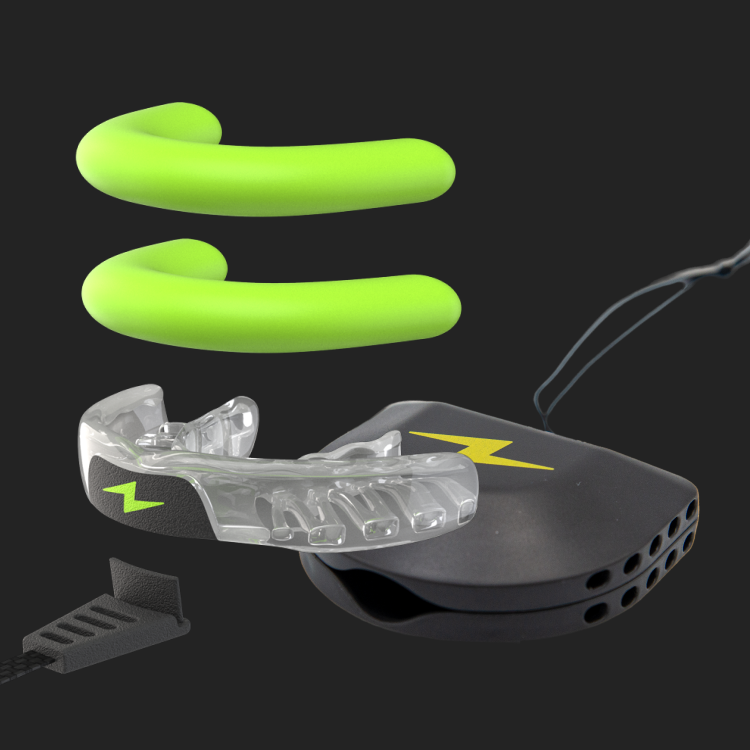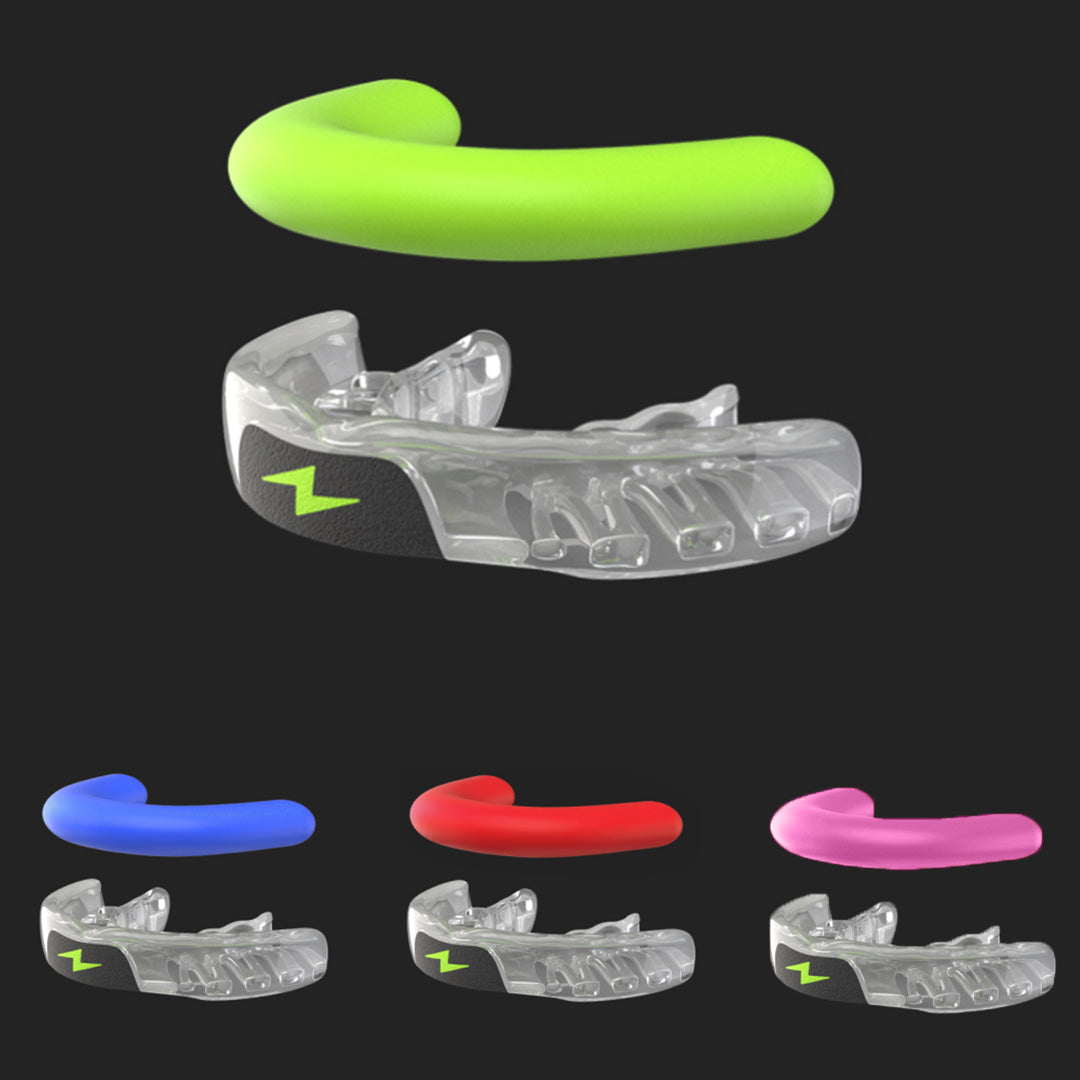Filters
4 products
Hockey Mouthguards
Hockey is a fast-paced, physical sport where collisions, sticks, and pucks create a perfect storm of risks—making mouthguards an essential piece of equipment for players at every level. Beyond just protecting teeth, mouthguards safeguard a player’s overall health, confidence, and ability to stay in the game. Here’s why they’re non-negotiable on the ice.
First, mouthguards are critical for dental protection. Hockey’s high-impact nature—pucks flying at over 100 mph, sticks swinging, and body checks—puts teeth in constant jeopardy. A single hit can crack, chip, or knock out teeth, leading to painful injuries and costly repairs. The American Dental Association notes that sports like hockey account for a significant chunk of dental trauma, with repairs often running thousands of dollars per incident. Mouthguards act as a shock-absorbing barrier, cushioning blows and distributing force to prevent fractures or loss. For youth players especially, whose teeth are still developing, this protection is vital to avoid lifelong dental issues.
Beyond teeth, mouthguards reduce the risk of jaw and facial injuries. A hard check or errant stick can fracture a jawbone or damage soft tissues like lips and cheeks. Custom-fitted mouthguards—molded to a player’s bite—stabilize the jaw, absorbing impact and lowering the chance of breaks or dislocations. Studies, like those from the Journal of Athletic Training, show mouthguards can decrease the severity of oral trauma by up to 60%. They also help shield against cuts inside the mouth, reducing bleeding and infection risks during play.
Concussion prevention is another key reason mouthguards are essential. While not a cure-all, they provide a buffer that can lessen the force transmitted to the skull. When a player takes a hit to the jaw or face, the impact can ripple to the brain, potentially causing a concussion. Research, including a 2014 study in the British Journal of Sports Medicine, suggests that mouthguards may reduce concussion risk by stabilizing the head and neck during collisions. In a sport where concussions are a growing concern—hockey ranks high among contact sports for brain injuries—this added layer of protection is invaluable, especially for younger athletes.
Comfort and confidence also play a role. Modern mouthguards, particularly custom or boil-and-bite models, fit snugly, allowing players to breathe, speak, and hydrate without distraction. This comfort translates to focus—players aren’t worrying about loose gear or unprotected mouths. Knowing they’re shielded from injury boosts confidence, letting them play aggressively without hesitation. For enforcers or forwards crashing the net, this mental edge is as crucial as the physical safeguard.
Finally, mouthguards are often mandatory. Leagues like the NHL, NCAA, and youth organizations require them, recognizing their proven benefits. Skipping one isn’t just risky—it’s a penalty waiting to happen. From saving teeth to softening blows and supporting brain health, mouthguards are a small investment with massive returns. For hockey players, they’re not optional gear—they’re a lifeline on the ice.
New Vendor Opportunity
Are you interested in selling your brand or product on the HockeyBag.com marketplace?
Fill out the form and tell us about your brand or product. We look forward to learning more!
Discover HockeyBag.com
The Hockey Marketplace
Hockey isn't just a game—it's a passion, a family, and a way of life. Whether you're lacing up for your first match, coaching the next generation, or cheering in the stands, having the right gear and support is essential to the experience. Enter HockeyBag.com, the ultimate online hockey superstore that caters to players, parents, and coaches alike.
What makes HockeyBag.com the go-to destination for everything hockey? Let's find out.
More Than a Store—A Community for Hockey Enthusiasts
HockeyBag.com isn’t just another eCommerce site; it’s a hub where hockey lovers come together. This comprehensive online marketplace is built with the hockey community in mind, offering a one-stop shop for superior gear, expert curation, and unparalleled convenience.
With a vast selection of products and a user-friendly platform, HockeyBag.com makes it easy to find everything you need to thrive on and off the ice.
What You’ll Find at HockeyBag.com
From basic essentials to specialty items, HockeyBag.com carries one of the widest selections of hockey products on the internet.
Hockey Equipment
Gear up with high-performance bags, sticks, pads, skates, helmets, and more. Whether you're an amateur or a pro, you can trust HockeyBag.com to stock equipment designed to elevate your game.
Apparel
Find premium-quality hockey jerseys, breathable practice wear, and warm outer layers perfect for chilly rinks and morning practices.
Accessories for Your Gear and Beyond
Whether you need durable hockey tape, stick wax, or duffle bags to organize your gear, the site offers a wide variety of accessories for every aspect of the sport.
Unique Finds and Gifts
From mini hockey sticks to collectible items, you can discover exclusive products that make perfect gifts for every hockey fan.
Opportunities for Hockey Brands and Vendors
Are you a hockey brand looking to showcase your products to an engaged, dedicated audience? HockeyBag.com could be the perfect platform to grow your presence.
- Direct Access to Hockey Enthusiasts
Every visitor on HockeyBag.com is passionate about the sport, making this marketplace ideal for brands ready to connect with their people.
- Support for Emerging Businesses
HockeyBag.com celebrates creativity and innovation. Smaller startups have the opportunity to stand out and thrive alongside established brands.
- Collaborate in Elevating the Sport
By partnering with HockeyBag.com, brands contribute to advancing the hockey community and improving the game for players and fans.









